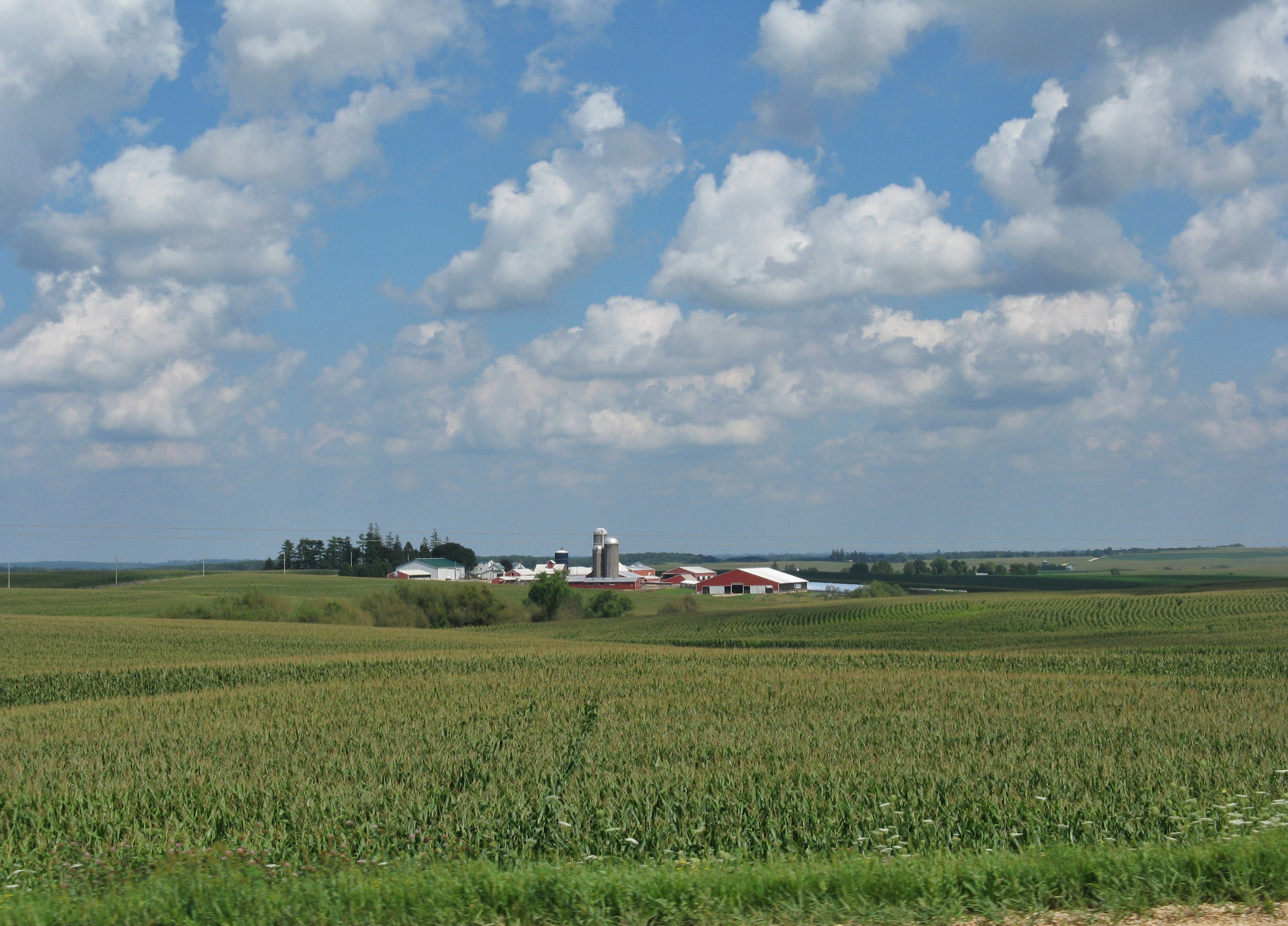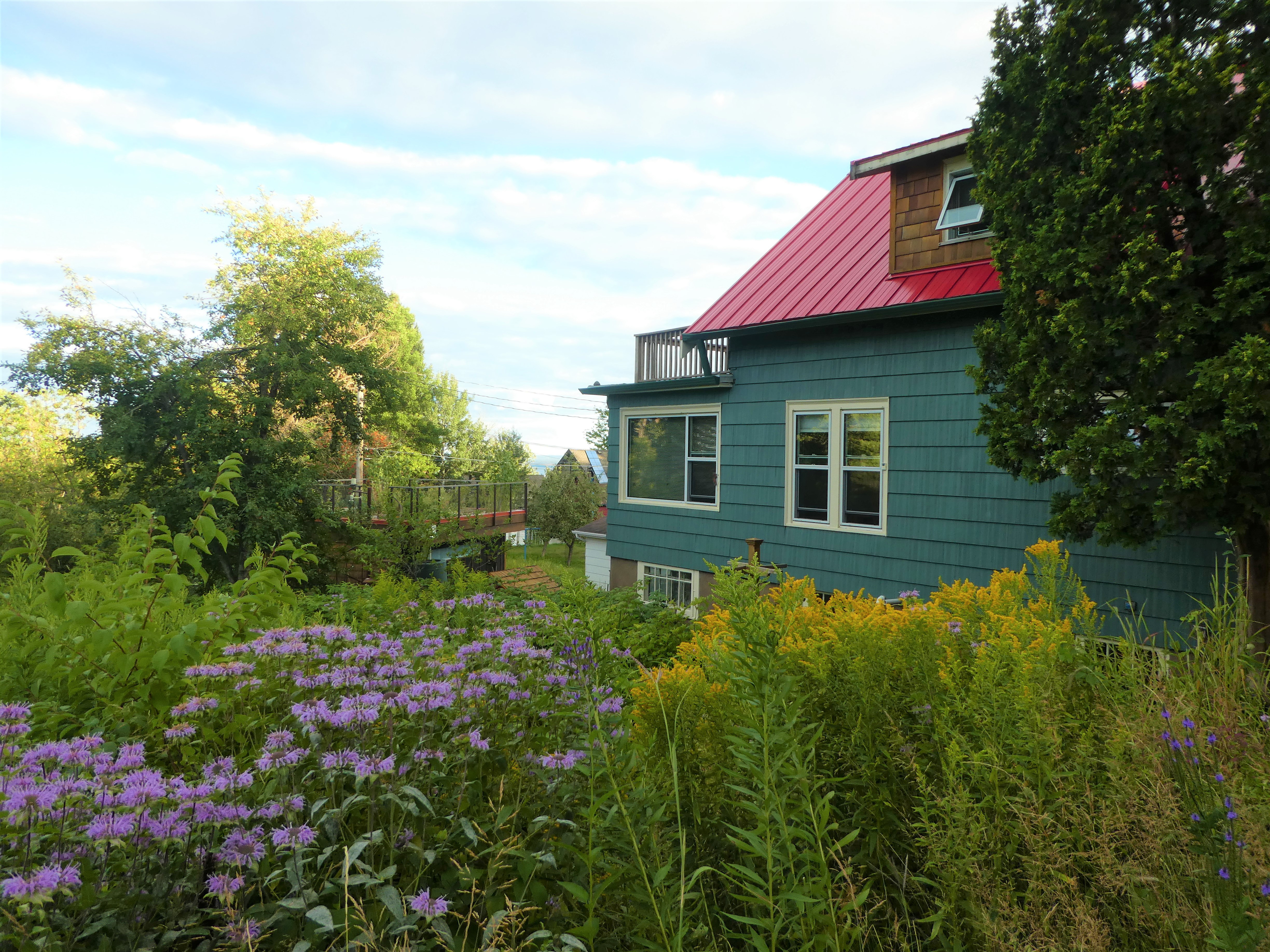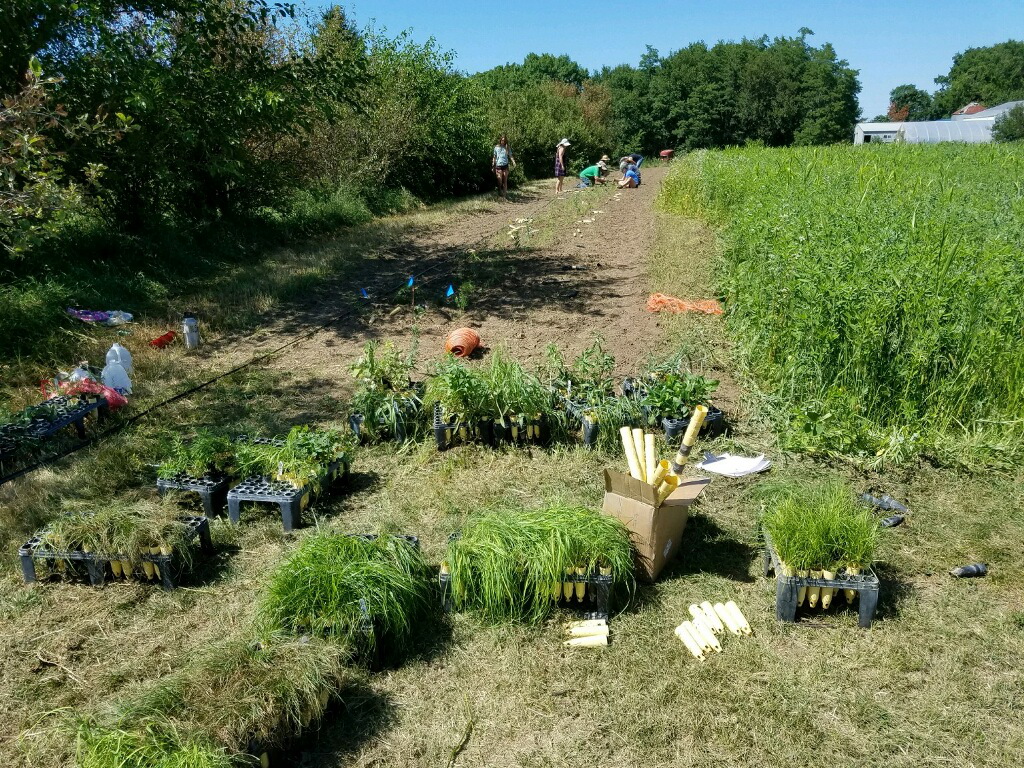Studies from across the world show that insects are declining. There is much we do not know, but we do know enough to take action now.
This piece originally appeared in the Fall 2019 edition of Xerces’ biannual publication Wings. Click to view the full Fall 2019 issue.
This summer, I visited America’s heartland, the agricultural states of Nebraska and Iowa. My trip was for both pleasure and work—seeing family in Nebraska, where I grew up, and then taking part in a farm tour in Iowa, where I was presenting an overview of the many threats to insects and the strategies for their conservation. Driving across eastern Nebraska and western Iowa with my son Theo to attend the farm tour in Grinnell one morning in July, the enormity of the impact we are having on the planet was brought home to me. Forty years ago I remember the rolling hills along the Missouri River covered with trees and, in the flatter areas between Lincoln and Omaha, a variety of crops, including sorghum and corn, growing in relatively small fields. Back then the sea of corn and soybeans did not start until you were into Iowa and well east of the Missouri River.

All of that has changed. As we drove east from Lincoln almost every available space was corn or soybeans, giant fields stretching to the horizon. On the outskirts of Omaha, corn grew right up to the parking lot of a sprawling shopping mall. Even the steeper hills in the bluffs east of the river are now corn. Combine that with the urban sprawl from Omaha and Lincoln and it is easy to understand why we are seeing declining populations of insects, birds, and other animals. Wild creatures simply have fewer places to live, and all wildlife has to contend with the multiple poisons that humans use in both urban and rural areas. When we arrived at Grinnell Heritage Farm the loss of insects was already on people’s minds. Before I spoke, one farm visitor commented that “driving across Iowa you rarely see insects get smashed on the windshield anymore.” This is not an isolated observation. Many scientists from the United States and Europe have noted how few insects are splattered on the fronts of cars compared with the profusion that they remember from when they were growing up. As a young man in Nebraska, my pride and joy was a 1971 Mach 1 Mustang, which I had to wash weekly to keep it clean and shiny. For many of us it seems as though there are now far fewer insects to clean off of our cars after a long trip. Indeed, the windshield of my rental car was clean following that morning’s drive. But memories vary, and we really cannot rely on anecdotes of the “windshield effect” as we seek to understand long-term wildlife trends.
I’ve had many conversations about insect conservation—which stands to reason for the ED of Xerces, right?—but over the years both the frequency of those conversations and the urgency of the issue have grown. Some people question the severity of insect declines, while on the other hand news headlines have employed phrases such as “insect apocalypse,” rhetoric that some scientists consider to be ahead of our understanding of the science. Moreover, industry representatives have tried to create confusion around the issue, particularly when it comes to the devastating impacts that pesticides inflict on insect populations.
The evidence is clear that we are losing insects at an alarming rate. Among bumble bees, 28 percent of species in North America are considered threatened; 41 percent in Mesoamerica; and 23.5 percent in Europe. Among butterflies, ten-year trends in the United Kingdom show that 52 percent of species have declined in abundance at monitored sites and the geographic ranges of 47 percent of species are reduced. A monitoring program in Belgium showed that nineteen of the sixty-four butterfly species indigenous to the Flanders region have been extirpated and no longer occur there. European invertebrate species whose population trends have been evaluated show a high proportion in decline, and a far smaller fraction increasing. Assessments in North America show similar trends: NatureServe assessed 636 butterfly species in the United States and Canada and found 19 percent at risk of extinction.
The situation appears no better for other groups of insects and invertebrates. Studies in the United States show that roughly a third of tiger beetle species and subspecies are sufficiently rare to be considered threatened or endangered, and 43 percent of stoneflies in the United States are at risk of extinction. Many other aquatic invertebrates are also faring poorly, with 65 percent of freshwater mussels, 64 percent of aquatic snails, and 47 percent of crayfish at risk of extinction.
Although fewer than 1 percent of described invertebrate species have been assessed for threats by the International Union for Conservation of Nature, approximately 40 percent of all those that have been assessed are considered threatened. In addition to losses in invertebrate species and distributions, reductions in total insect biomass are being reported from long-term studies done in many parts of the globe:
- Ohio, USA: A 33-percent reduction in the abundance of butterflies was observed over twenty-one years of extensive monitoring.
- California, USA: Monitoring done at sites across northern California from sea level to mountains over a forty-five-year period found that abundance is declining in all groups of butterflies.
- Costa Rica: Repeated surveys in a protected forest have found declines in entire genera of tropical moths.
- Germany: The total biomass of flying insects decreased by more than 70 percent across sixty-three study locations over twenty-seven years.
There has been some criticism of individual studies, with scientists pointing out that we still need more data to understand fully the overall scale of insect losses. I agree that additional information should be gathered. But we have enough data now to know that action is necessary, and that if we do not act the consequences will be severe. We had similar warnings about human-caused climate change as early as the 1980s, and had we acted then we might not be in the climate crisis we find ourselves in now. Some in industry and government may say, “We do not know enough,” or, “We do not fully understand the causes, so how can we take action?” These are eerily reminiscent of earlier claims that climate change is not real, and that smoking does not cause cancer.
The overall trend is clear. Assessments from all continents except Antarctica reveal declines—and in many cases the losses are severe. This is seen even in species that are widely found and well-known. Both eastern and western populations of the monarch butterfly (Danaus plexippus) in North America have been devastated; the monarchs that overwinter along the Pacific coast have decreased by more than 99 percent since the 1980s. Another widely distributed species, the rusty patched bumble bee (Bombus affinis) was once common throughout the Midwest and the northeastern United States, but its numbers have dropped by more than 90 percent; in 2017 it became the first bee in the continental United States to be protected under the Endangered Species Act.
So why are we seeing these declines? We have removed, degraded, or fragmented habitat in agricultural areas as well as in towns and cities. Less habitat means less diversity of species and less abundance of those that survive: it is as simple as that. Add in the toxic chemicals that are widely used—from the herbicides and insecticides employed in growing corn, soybeans, and many other crops, to the many pesticides applied in the quest for weed-free lawns and perfect-looking roses—and even the habitats that do remain often have pesticide residues that can profoundly impact insects. There are additional negative consequences from invasive plants and animals, globally distributed diseases of bumble bees and other insects, poor water quality and quantity that imperil stoneflies and other aquatic invertebrates, and lights that are disruptive to such nocturnal insects as fireflies and moths. Overlay all of this with the increase in severe weather events and shifting rainfall patterns that are caused by climate change, and you can see that it is hard to be an insect in this human-dominated world.

So what do we do to encourage robust populations of diverse native insects? We need high-quality, climate-resilient habitat across the landscape. Government agencies, farmers, managers of natural areas, homeowners, and businesses all can protect and restore habitat, reduce the harm of pesticides on nontarget insects, and undertake actions to help slow climate change.
In my line of work, it is easy to become discouraged. The issues are large and sometimes the solutions seem too small. But I believe that there is hope. Although the evidence certainly shows that insects are declining in abundance, diversity, and biomass, studies also demonstrate that if we protect, restore, and enhance habitat and eliminate pesticides, then insects rebound. Research on a site in the United Kingdom showed that restoration led to a threefold increase in the numbers of a butterfly there. Similar studies in the United States show that hedgerow habitat on farms leads to greater diversity and abundance of bees and, over time, helps not just generalist bees but also those that are less common. Removal of invasive plants from streams and wetlands has been shown to improve habitat for dragonflies and damselflies. And protection and restoration of the habitat of a variety of rare insects has led to increases in their population sizes.

I also gather hope from seeing what people are doing in their daily lives. The Grinnell Heritage Farm is a shining example of what we can do on farms to help insects. Andrew and Melissa Dunham have converted their fifth-generation family farm from a business-as-usual conventional operation growing corn and soybeans to a farm that produces high-quality healthy food while providing for beneficial insects and other animals. They have moved away from pesticides and adopted organic practices. The farm features beetle banks to attract predators of crop pests, hedgerows crisscrossing the farm to offer refuge for pollinators and beneficial insects, and cover crops that provide habitat and improve soils. All of these increase biodiversity and help species adapt to climate change. And the Dunhams are by no means the only ones making an important contribution; we work with hundreds of farmers who are stepping up to increase habitat and decrease pesticide impacts. Almost a million acres have been restored through our partnerships with farmers, food companies, and state and federal agencies. Add to that all of those who are taking action in towns and cities, together with managers working in natural areas and on roadsides, and the combined effort does give me hope for the future.
The good news is that all of us can contribute. Replace part of your lawn with native flowering plants; get rid of toxic insecticides; buy local, organic, and sustainable food when possible; and lower your climate footprint by eating more vegetables and less meat. Remember that even the tiniest backyard or balcony can be a stopover for those smallest of animals upon whom we all depend.
Additional Resources
Support our work to conserve of the life that sustains us with a tax-deductible, year-end gift.
This piece originally appeared in the Xerces Society publication Wings. Read the full Fall 2019 issue.
Read the paper Declines in insect abundance and diversity: We know enough to act now, written by Matt Forister, University of Nevada–Reno; Scott Hoffman Black, Xerces Society; and Emma Pelton, Xerces Society.



